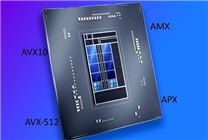Should You Upgrade to a PCIe 5.0 SSD? Key Insights for Power Users
In the world of computing, the introduction of SSD hard drives has dramatically transformed the user experience. However, with the rise of PCIe 3.0 and 4.0, the latest PCIe 5.0 SSDs find themselves in a challenging position, despite boasting incredible speeds of up to 14GB/s and enhanced 4K random performance. So, is it worth investing in a PCIe 5.0 SSD? Let’s explore who might truly benefit from this upgrade.
Who Needs PCIe 5.0 SSDs?
The upgraded PCIe 5.0 SSDs represent a significant leap in technology, but not every user will notice the difference from their PCIe 4.0 or 3.0 counterparts. Here are three user categories that might see substantial benefits from making the switch:
1. Data-Heavy Professionals
For scientists and professionals dealing with massive data sets—often in the terabyte (TB) or petabyte (PB) range—the advantages of PCIe 5.0 are clear. The increased read and write speeds of 14GB/s can substantially accelerate data loading and processing tasks, aiding in everything from complex simulations to extensive data analysis.
2. Content Creators
Video editors, 3D animators, and designers are part of an essential group of content creators who strive for efficiency. Tasks like editing 4K or 8K videos demand high-speed storage to streamline workflows. The PCIe 5.0 SSD can significantly enhance productivity for these users by minimizing lag and increasing the speed of rendering and editing processes.
3. Future-Proof Gamers
While gamers can benefit from PCIe 5.0 SSDs, it’s important to note that not all players will feel a tangible difference. The heightened speeds might not provide noticeable improvements over PCIe 4.0 or even 3.0 for current games. However, for gamers looking to future-proof their systems, PCIe 5.0 is a consideration. Emerging technologies like Microsoft’s DirectStorage, which allows games to load data directly into the GPU from the SSD, promise significant performance enhancements. This technology is primarily aimed at PCIe 4.0 SSDs, but PCIe 5.0 could potentially amplify these benefits. Still, the ubiquity of DirectStorage is yet to be realized, limiting immediate value.
The Cost-Benefit Analysis
Given the substantial price tag of PCIe 5.0 SSDs, potential buyers should consider their specific needs. Professionals in data-intensive fields and content creators willing to invest in cutting-edge technology will likely see a positive return on investment. On the other hand, casual gamers or users with less demanding requirements might find it more beneficial to allocate their budget toward higher storage capacities rather than the latest generation of speed.
Conclusion
While PCIe 5.0 SSDs offer impressive speed capabilities and technological advancements, they may not be necessary for every user. The real impact will be felt primarily by professionals working with massive datasets, content creators striving for efficiency, and gamers looking to prepare for the next generation of gaming experiences. For many everyday users, especially those primarily focused on capacity rather than speed, sticking with a well-priced PCIe 4.0 SSD could be the more economical choice.
As the landscape of storage technologies continues to evolve, staying informed will empower users to make the best decisions for their unique computing needs.










